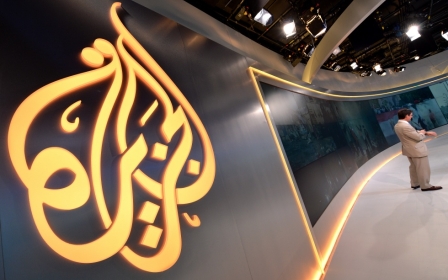Open house in Baghdad's mythical Green Zone

by Jean Marc Mojon
Thousands of wide-eyed Iraqis marvelled at the fountains, flowers and perfect lawns in Baghdad's Green Zone on Sunday, a day after protesters breached the walls of the fortified area.
"This is the first time I've been here since I came with my school under Saddam [Hussein]," said 32-year-old Yusef al-Assadi after snapping a "selfie" in front of the monument to the unknown soldier.
The visitors were mostly protesters who broke in on Saturday but also included Baghdadis taking the opportunity to see an area that was off-limits for so many years that it acquired almost mythical status in the psyche of ordinary citizens.
Small groups formed sporadically to wave Iraqi flags and chant slogans against Iraq's "corrupt political elite" or in support of Moqtada al-Sadr, the young cleric who masterminded weeks of protests demanding a new cabinet.
But there was a fairground atmosphere in most of the areas of the Green Zone protesters could access Sunday, with disparate groups visiting all of the key sites one by one like tourists.
"I will never forget this day," said Ali Jabbar Taher, pacing around the corridors under the monument to the unknown soldier, a striking memorial designed by an Italian architect in the late seventies.
"Look at all this, it's incredible... There's a door here... and another there," he said, as he used the torchlight on his mobile phone to explore the monument's basement.
Baghdad blind spot
"I never thought I would come here one day. And the grass, the fountains in the Green Zone... all the politicians were keeping all of it to themselves."
The Green Zone houses parliament, which protesters stormed on Saturday, the prime minister's office, the presidency and several other key institutions and top officials' homes.
At the foot of the unknown soldier's monument, men removed their sandals and waded in a cascading fountain to cool off.
"My God, this water is amazing. It's not like the water we get in Sadr City," said one middle-aged man who lives in the huge neighbourhood in northern Baghdad where Moqtada al-Sadr enjoys a large following.
The euphoria of discovering what had been a blind spot on most Iraqis' map for years yielded other equally fanciful claims, but nobody seemed ready to let hard facts break the spell of a perfect day.
"These are the most beautiful days of my life," said Hussein al-Ali, who had laid blankets under a tree to rest with four of his friends.
"These flowers, this grass... Iraq is rich, all of Iraq should be like this," said Ali, a soft-spoken 53-year-old from the southern city of Basra with a short salt-and-pepper beard and a white skullcap.
On the nearby parade grounds, almost everybody stopped for a picture under the "Crossed Swords monument," another Baghdad landmark that had remained out of bounds since invading US-led forces established the Green Zone in 2003.
'A crazy day!'
Huge crossed swords held by hands said to have been modelled on those of former president Saddam Hussein form the two triumphal arches.
Between the two arches, men took it in turns to sit in the chairs on the presidential stand, some mimicking Saddam's military salute, others imitating his speeches.
One ecstatic youngster got on the phone as soon as he'd had his turn. "I sat in Saddam's chair! I'm not joking, it's a crazy day!"
All around the parade grounds, protesters laid down blankets and set up a few tents, sometimes gathering for prayers.
Boys in their underwear jumped from a military statue into a pool, while vendors did brisk business selling everything from popsicles to mobile phone chargers.
The peaceful and joyful atmosphere belied the momentous nature of the situation: protesters roaming freely in the Green Zone, one of the world's most high-security institutional quarters.
The American embassy in Baghdad - the world's largest - lies just a few hundred yards from where the protesters who stormed parliament Saturday were gathered.
"Iraqis had a revolution in 1920 against the British, one in 1958 against the monarchy. This should be considered Iraq's third revolution," said Hussein al-Ali.
"We hope it will be peaceful."
New MEE newsletter: Jerusalem Dispatch
Sign up to get the latest insights and analysis on Israel-Palestine, alongside Turkey Unpacked and other MEE newsletters
Middle East Eye delivers independent and unrivalled coverage and analysis of the Middle East, North Africa and beyond. To learn more about republishing this content and the associated fees, please fill out this form. More about MEE can be found here.




